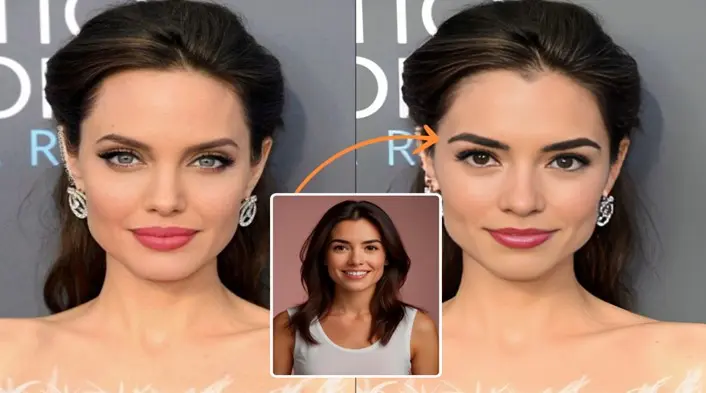In the fast-evolving landscape of artificial intelligence, AI video face swap technology has emerged as one of the most fascinating and impactful innovations. Whether for entertainment, content creation, or professional filmmaking, the ability to seamlessly swap faces in videos has opened a world of creative possibilities. With advancements in deep learning and facial recognition, this once sci-fi concept is now accessible to everyday users and professionals alike.
What is AI Video Face Swap?
At its core, AI video face swap involves replacing the face of a person in a video with another person’s face, all while preserving realistic movements, expressions, lighting, and angles. Unlike static image editing, face swapping in videos is far more complex because it requires consistent tracking of facial landmarks frame by frame. This process is powered by deepfake technology, using Generative Adversarial Networks (GANs) and neural rendering to create high-fidelity, believable face swaps.
This technology has been used across multiple industries, from entertainment and advertising to education and historical documentaries. You might have already seen popular examples on social media where celebrities’ faces are swapped into viral clips or old movie scenes. The realism is often so convincing that it’s difficult to tell the difference without close scrutiny.
AI Face Swap Video Apps and Tools
Thanks to recent advancements, creating an AI face swap video no longer requires extensive technical knowledge. A growing number of apps and platforms make it easy for users to swap faces in videos with just a few clicks. Tools like Reface, DeepFaceLab, Zao, and FaceMagic are designed for casual users, offering intuitive interfaces and fast processing times.
For professionals, more advanced software like DeepFaceLab or Avatarify allows for detailed customization and editing. These tools provide control over facial expressions, eye movements, and even lip-syncing, enabling creators to produce videos that are not only realistic but also emotionally expressive.
The Rise of Multiple Face Swap Technology
One of the most exciting developments in this field is the introduction of multiple face swap capabilities. This feature allows users to swap multiple faces within a single video simultaneously. Imagine replacing every character in a movie scene with faces of your friends or popular figures – the possibilities for creativity and humor are endless.
Multiple face swap technology is particularly useful in group settings, such as parody videos, family montages, or themed marketing content. Content creators and meme makers are using this to generate engaging content that grabs attention and drives interaction across social platforms.
From a technical perspective, this requires even more robust facial recognition and tracking algorithms. The AI must identify, isolate, and swap multiple faces in real-time, while maintaining frame coherence and avoiding glitches. It’s a testament to how far this technology has come in recent years.
Applications and Use Cases
- Entertainment: From comedic parodies to movie remakes, AI face swaps are used to entertain audiences by putting familiar faces into unexpected roles.
- Marketing: Brands use AI face swaps in viral campaigns to create buzz and encourage user-generated content.
- Education & Training: In historical re-enactments or simulation training, face swaps can personalize content for different viewers or simulate scenarios.
- Gaming & Virtual Reality: Real-time face swapping in gaming enhances immersion and can customize avatars for a more personal experience.
- Film and TV: Producers use face swaps to de-age actors, recreate scenes, or even replace actors post-production without needing reshoots.
Ethical Considerations and Challenges
While the innovation is impressive, AI face swap video technology also raises important ethical questions. The same tools that can create funny or artistic content can also be misused for deepfake hoaxes, impersonation, and spreading misinformation. As the lines between real and artificial content blur, viewers may find it difficult to distinguish fact from fiction.
To combat misuse, several platforms have implemented content labeling and detection systems. AI-generated videos can now be flagged or watermarked to inform viewers about their synthetic nature. Meanwhile, researchers are developing AI tools to detect face swaps and identify manipulated content with high accuracy.
The Future of Face Swapping
Looking ahead, AI video face swap technology is only going to become more advanced, efficient, and accessible. With real-time face swapping becoming a reality in video conferencing and live streams, the way we communicate and entertain may soon look entirely different.
As multiple face swap technology becomes more refined, we can expect a surge in interactive media where audiences become a part of the story – literally. Personalized movies, ads, and training videos are on the horizon, and AI will be at the heart of it all.
In conclusion, the rise of AI video face swap, AI face swap video, and multiple face swap technologies is revolutionizing how we create and consume digital content. With powerful tools in our hands and creativity as the only limit, we are witnessing the dawn of a new era in visual storytelling.
Also Read-Maximize Your Tractor’s Potential: Expert Tips to Boost Efficiency and Work Quality


